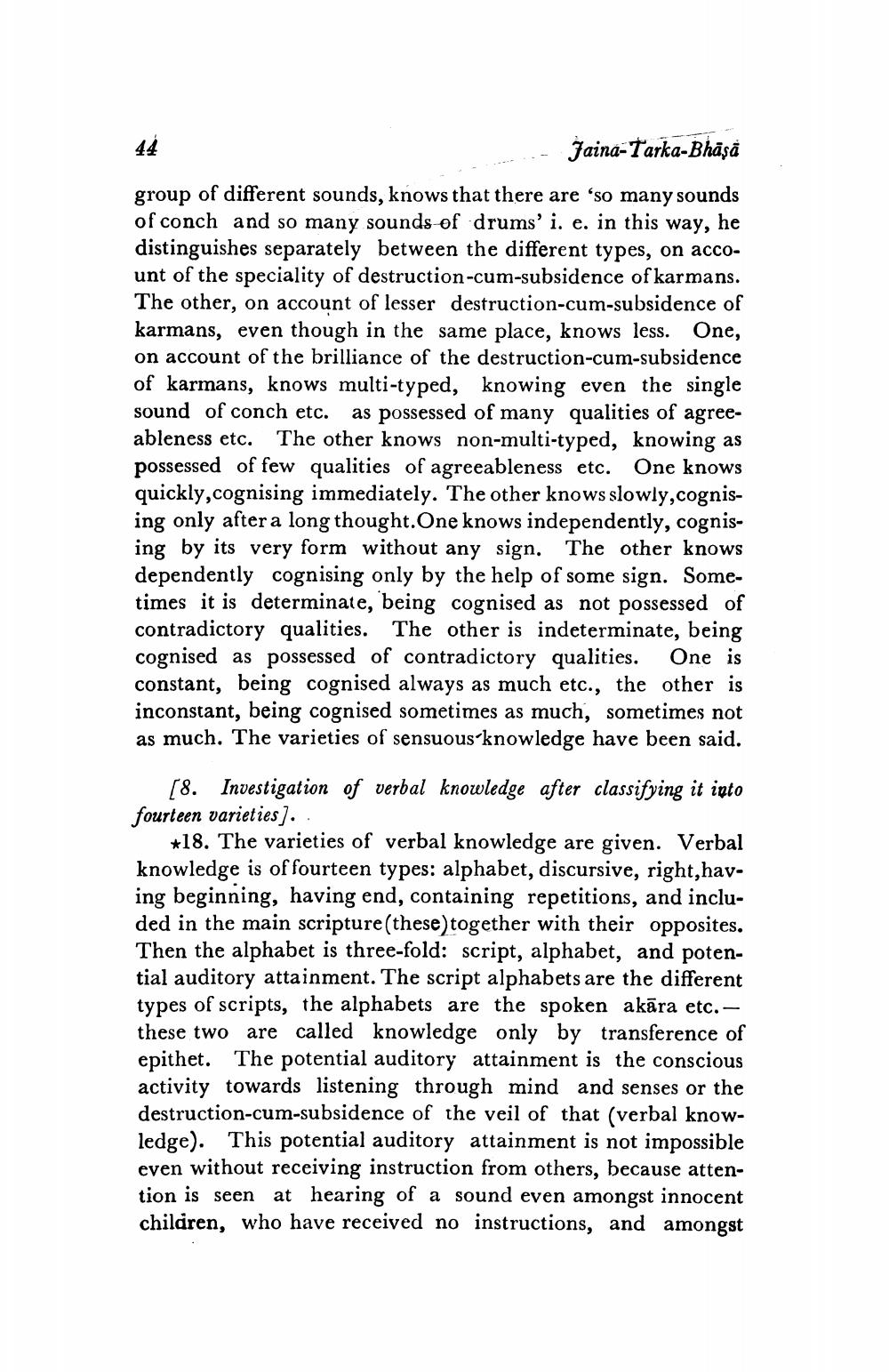________________
44
Jaina-Tarka-Bhāṣā
group of different sounds, knows that there are 'so many sounds of conch and so many sounds of drums' i. e. in this way, he distinguishes separately between the different types, on account of the speciality of destruction-cum-subsidence of karmans. The other, on account of lesser destruction-cum-subsidence of karmans, even though in the same place, knows less. One, on account of the brilliance of the destruction-cum-subsidence of karmans, knows multi-typed, knowing even the single sound of conch etc. as possessed of many qualities of agreeableness etc. The other knows non-multi-typed, knowing as possessed of few qualities of agreeableness etc. One knows quickly,cognising immediately. The other knows slowly,cognising only after a long thought.One knows independently, cognising by its very form without any sign. The other knows dependently cognising only by the help of some sign. Sometimes it is determinate, being cognised as not possessed of contradictory qualities. The other is indeterminate, being cognised as possessed of contradictory qualities. One is constant, being cognised always as much etc., the other is inconstant, being cognised sometimes as much, sometimes not as much. The varieties of sensuous knowledge have been said.
[8. Investigation of verbal knowledge after classifying it into fourteen varieties).
*18. The varieties of verbal knowledge are given. Verbal knowledge is of fourteen types: alphabet, discursive, right,having beginning, having end, containing repetitions, and included in the main scripture (these) together with their opposites. Then the alphabet is three-fold: script, alphabet, and potential auditory attainment. The script alphabets are the different types of scripts, the alphabets are the spoken akāra etc. - these two are called knowledge only by transference of epithet. The potential auditory attainment is the conscious activity towards listening through mind and senses or the destruction-cum-subsidence of the veil of that (verbal knowledge). This potential auditory attainment is not impossible even without receiving instruction from others, because attention is seen at hearing of a sound even amongst innocent children, who have received no instructions, and amongst




